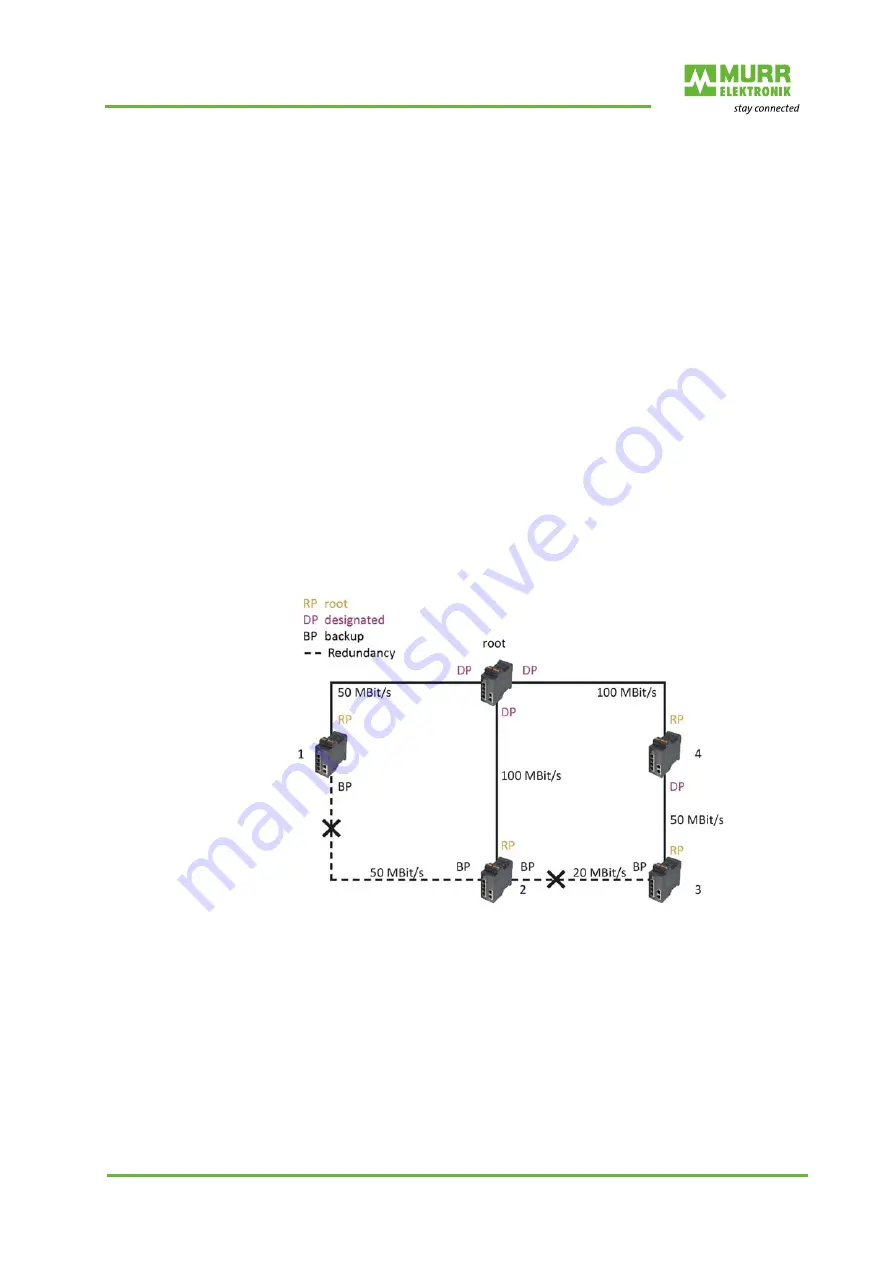
Description of functions
User manual 58185_TREE M4/6-TX PN IP20_hdb_en_10
24/103
4.2
Additional functions
In addition to basic functions, the TREE-managed PROFINET switches have
the following additional features:
The Rapid Spanning Tree Protocol (RSTP) increases the operational and
data transmission security through redundant network structures.
The Media Redundancy Protocol (MRP) increases the operational and
data transmission security through redundant network structures.
Diagnostic functions
4.2.1
Operational safety by means of RSTP
Basis: Spanning Tree
Protocol (S/STP)
The Rapid Spanning Tree Protocol is based on the Spanning Tree Protocol. It
is designed to allow data to be forwarded through other, intact connections to
the target device whenever a network connection is interrupted. This increas-
es the availability of the network. S/STP uses a loop-free LAN topology with
redundant network paths.
Rapid Spanning Tree
Protocol (RSTP)
RSTP reduces the amount of time required to create a backup connection to
the network device. It was standardized in the IEEE-802.1w specification. The
mode of action of the RSTP is provided in the following section.
The network is transformed from a mesh topology to a tree (spanning tree)
(see Fig. 4-1: "Spanning tree topology with a redundant path").
Fig. 4-1: Spanning tree topology with a redundant path
1
Device 1: edge device
2
Device 2: edge device
3
Device 3: edge device
4
Device 4: non-edge device
Device designation in
RSTP
One of the following designations is assigned to each network device depend-
ing on its position in the network:
Edge
: network devices that do not forward any data (devices 1, 2 and 3),
Non-edge
: network devices that forward data (device 4).
















































